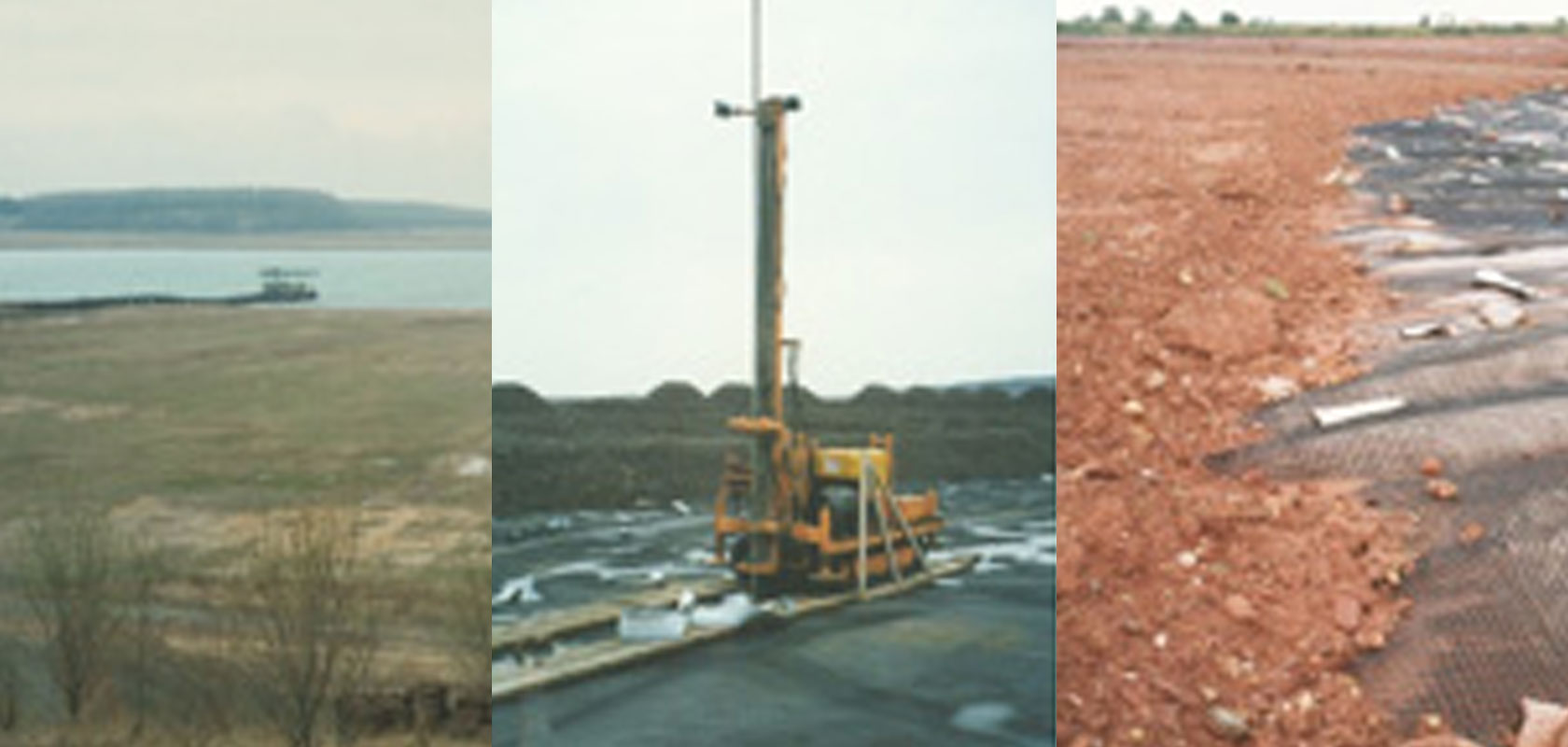
IAA Culmitzsch Tailings Impoundment
The Wismut mining company was responsible for the development and operation of the East-German uranium mines under Russian control from the 1940s to reunification in 1989. During this period these mines employed up to 100,000 people and were responsible for the production of about one third of the Soviet blocks uranium production. One of the principal mining areas was in Thuringia where a huge complex of open pits, notably the 300 m deep pit at Ronneburg and underground mines, over 300 million m3 of waste pits, two treatment plants and 6 tailings dams containing more than 100 million tons of tailings cover an area of approximately 32 km2. Immediately following unification of Germany, the mining operations were discontinued and a fund of approximately 14 billion DM (10 billion US dollars) provided for the clean-up and remediation of the uranium mining areas at an expenditure value of about 1 billion DM per year. This makes it the single biggest mining rehabilitation project in the world.
RGC was appointed by Wismut to develop the methods and technology for the placement of cover layers on the very soft (weak) tailings in the pond zone of the Helmsdorf tailings impoundment. These extremely weak (essentially fluid) tailings require special techniques to increase their consolidation sufficiently to enable conventional cover placement techniques to be used. This study involved the use of finite strain consolidation theory to develop a model which predicts the rates of consolidation and pore pressure dissipation within the slimes zone under self weight as well as the incumbent loads of cover layers and placing equipment. The effects of short and long band drains were modelled for both short and long term effects. Available computer codes were not able to perform the modelling, and additional model development had to be done for the project. The study resulted in the development of alternative cover placement methodologies and the demonstration of the analytical methods for their design.
Services Provided
- Design of remedial strategies for large uranium tailings impoundment
- Modelling consolidation of fine tailings under self-weight and proposed cover placement
- Assessment of long-term seepage from tailings impoundment
Papers
Wels, C., Robertson, A. MacG., and Jakubick, A.T.(2000): A Review of Dry Cover Placement on Extremely Weak, Compressible Tailings. Paper published in CIM Bulletin, Vol. 93, No. 1043, pp. 111-118, September 2000.
Wels, C., Robertson, A.MacG., and Jakubick, A.T.(1999): A Review Of Dry Cover Placement On Extremely Weak, Compressible Tailings. Paper presented at Sudbury ’99 – Mining and the Environment II; Conference held September 13-15, 1999, Sudbury, Ontario.
Wels, C., Robertson, A.MacG., and Jakubick, A.T.(1999): Cover Placement on Extremely Weak, Compressible Tailings. Paper presented at the Soft Tailings Stabilization Workshop, May 26-27, 1999, Edmonton, Alberta.
Wels, C., Barnekow, M., Haase, M., Exner, M., and Jakubick, A.T.(2000): A Case Stucy On Selfweight Consolidation Of Uranium Tailings. Paper presented at Uranium 2000; Conference held September 9-15, 2000, Saskatoon, Saskatchewan.
Clients
Wismut GmbH
